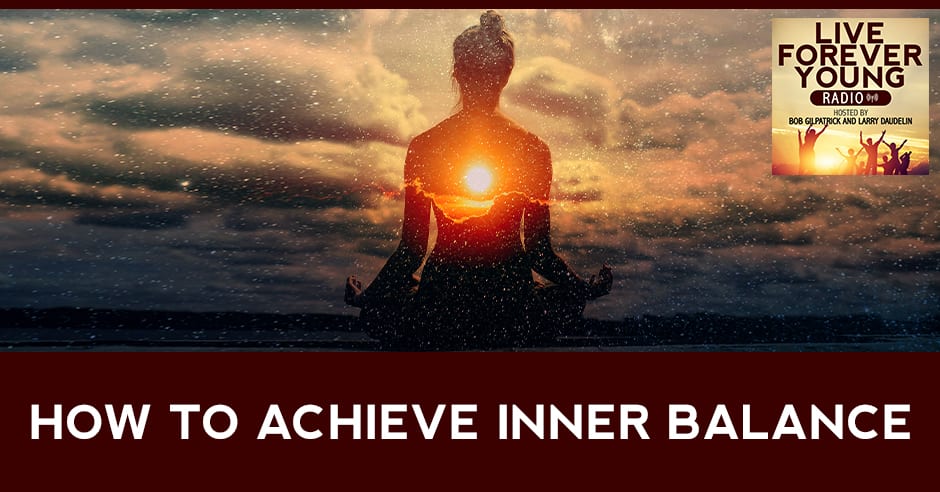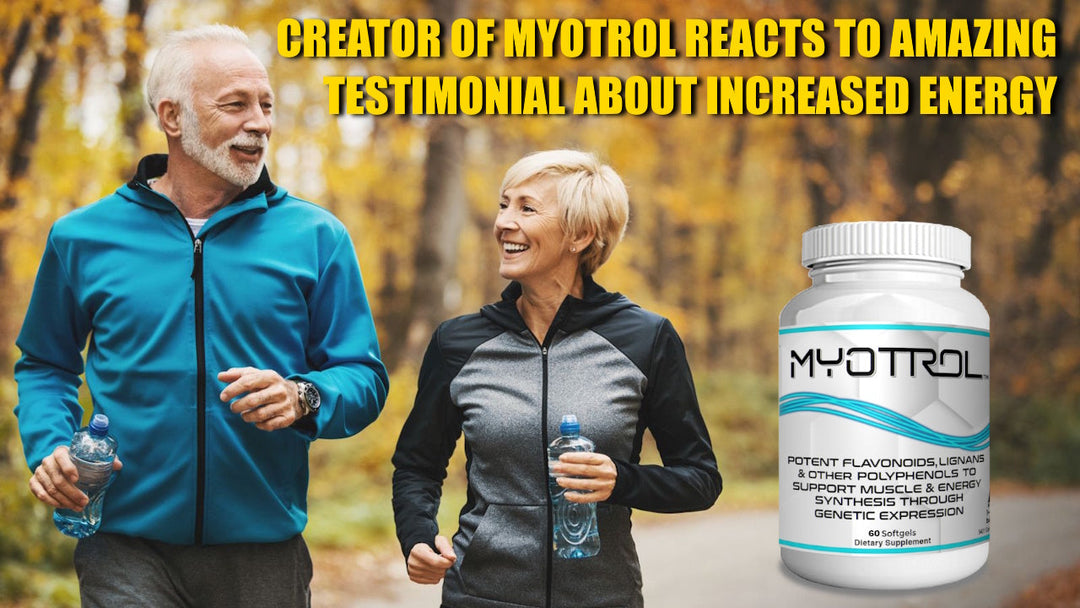How To Achieve Inner Balance

For centuries, spiritualists have tried to achieve inner balance, but what does that mean really? Find out as Bob Gilpatrick and Rollie Culp share a breakthrough device called the Inner Balance by HeartMath. With this device, you will find easy and reliable ways to calm anxiety and stress.
Discover how the Heart and Mind communicate and how to change your negative thoughts into positive ones with peace and gratitude. Learn some easy-to-use techniques that can be used in conjunction with the Inner Balance device to make stress and anxiety a thing of the past.
---
Watch the podcast here:
Listen to the podcast here:
[fusebox_track_player url="https://feeds.podetize.com/ep/0rIHV1-6A/media" title="How To Achieve Inner Balance" social_linkedin="true" social_pinterest="true" social_email="true" ]
How To Achieve Inner Balance
How The Inner Balance Device By HeartMath Works
We are going to talk about an important matter of managing your anxiety here in the first part of 2021 while the recovery is happening, still a little uncertainty, and vaccinations are going on, still a lot of people experiencing anxiety.
Even if their circumstances have changed, they have this residual effect from 2020 where people have developed patterns. We're going to talk about an amazing device called Inner Balance from the company called HeartMath. That is the closest thing to a guaranteed way to begin to get out of a state of anxiety and more into a state of joyful anticipation of the future.
We've talked about this device a lot on prior shows. We finally had the chance to put a show together where we can feature it. In that way, you can see it in action a little and get a more in-depth idea of how it works and what it does. As you said, I am very excited to share it because it's something that I enjoyed and you shared it with me. Now, I feel like I get to impart it onto more people and give them a chance to beat that anxiety monkey off their back.
What it does is it allows for cardio biofeedback. This part clips onto your ear. You turn the device on. It's measuring the variability of your heart rate and giving you feedback to an app on your phone that tells you how well you're doing in controlling your anxiety and changing the way your heart beats. This is very important.
We know from research from a long time ago that people's thoughts and their reaction to events change their heart. If you get scared by something and need to run, your heart is going to start beating faster. If you begin to calm down afterward or you decide you're going to meditate one day, your heart rate is going to slow down.
Based on what's happening with your brainwaves and neurotransmitters in your brain, it has an effect on your heart. It was realized that the heart muscle has its own neurons, own little mini-brain, and it's communicating with your brain and skull. Your heart is affecting your brain the same way that your brain can affect your heart.

Inner Balance: Your thoughts have an extremely close relationship with your heart health.
We were talking a little bit about it in another show. I believe it was in Healthy Heart, Healthy Life about how the heart itself has neurons in order to open up that communication with the brain, essentially. When they say, "Your thoughts might not affect your health," that's completely wrong. Your thoughts have an extremely close relationship with your heart health.
The communication that's coming from your heart has a definite effect on the health of the whole rest of your body. This issue of heart rate variability is very important because you can see on a printout how much variability you have in your heart rate.
Not to be confused with someone who has a fluttering heart or atrial fibrillation, this is a natural variation in your heartbeat. You want that because the variation in that heartbeat is indicative of a state of mind where everything is okay. That variability ends up sending a signal to your brain.
The signals are sent to your brain in a number of different ways. They're sent neuronally. They have a signal going from your heart to your brain the same way your brain communicates inside its brain. You also have electromagnetic pulses that are being produced both by your brain and heart. They're eavesdropping and communicating with each other as well. Also, you have neurotransmitters.
Your heart muscle makes some of the neurotransmitters that end up in your brain and create homeostasis in your brain. There are multiple ways that are going on. The one particular pathway that we are going to talk about is a pathway that controls the state of mind whether or not you are of the belief that things are okay and then, therefore, how is your body going to be reacting. What was the stat? How many people are of the belief?
It's not how many people. It's how often. The research showed that the average American is of the belief that everything is okay 5% of the time and 95% of the time, we have anxiety. Even if it's just background anxiety, we're having anxiety. This device, Inner Balance, is designed to move you away from that 5%, so it becomes 10%, 20%, 50%, and to the point where you have a constant state of calm alertness, where you're of the belief that everything is okay almost all the time. You only get into that state of, "Everything is not okay," if there's a true emergency.
The pathway works like this. If you're having thoughts in your mind, "Things aren't okay. I'm under stress here,” or you're looking over your shoulder, you send a signal to your heart muscle and your heart beats a certain way with very little variability. It sends then a signal to a different part of your brain called the amygdala, which has many tasks, but one of them is to decide if things are okay or not and send a signal to your frontal cortex thereof.
You have the echoes from the amygdala to the frontal cortex, to the heart and back to the amygdala. What we're going to be doing and showing how to do is how to create a pattern interrupt there by changing your breath and focus from what's going on to things you're grateful and compassionate towards beautiful, soft emotions. In this way, you're going to change the variability of your heart, which will change the signal to your amygdala, which will change the signal to your frontal cortex. You'll be able to be of the belief, "Things are better."
This is the background of it. Other people have heard of another pathway that starts in your brain, the hypothalamic-pituitary-adrenal axis. This axis is what is making your adrenal glands produce cortisol in the mitochondria in your adrenal glands, which is then flooding your body with cortisol, a stress hormone.
That's precipitated by this previous pathway we described. If you can modify the preceding pathway, it will mitigate the excessive secretion of cortisol, which is very important because you are going to have a lack of energy if you are constantly secreting cortisol because that cortisol that's produced by the mitochondria in your adrenals, damages mitochondria in your other cells. Your mitochondria are where you make energy. As the mitochondria produce less energy, you feel more anxious. That leads to much worse issues.
It's a cycle that needs to be broken. Knowing all of this now that the scientists who figured this out, many of them from the HeartMath Institute that invented the Inner Balance device, did a lot of this research and created the device that helps with the mitigation.
The bottom line is to improve the communication between the amygdala, heart, and frontal cortex, and you will then improve the reaction of the adrenals and the production of cortisol, which we talked about as the stress hormone. That's one of the major stress hormones that you don't want a lot of and you want to try to mitigate.
When you're able to do that, then your adrenals will reset. They'll gain strength. As a result, your whole body is going to gain strength. In HeartMath, they talk a lot about resilience. They say that by using the HeartMath device, you are going to generate more resilience so that if something happens that's upsetting, you'll be able to better bounce back. A lot of that resilience is related to not flooding all of your mitochondria with cortisol so that you can make more energy.
The actual physical response is the big part of not feeling tired, the lessening of cortisol. When you feel more resourceful because you have more energy and less of that crazy pathway that things aren't okay. You can be more productive. You can feel better and your health would improve. You got the little HeartMath. This is the power button, turn that sucker on, and then that clips on your ear.
I've always clipped it on my left ear. It's closer to my heart. I've never clipped it on my right. I don't want to confuse my device. Turn on your phone. I have the app loaded right here called Inner Balance. You tap it and this beautiful mandala shows up. This mandala does two things. It's going to shrink down and expand back up. You're going to sync your breath to it.
I've got mine synced to five seconds, which you can change in the settings if you want to. I'm going to breathe in for five seconds, and out for five seconds. As you do that, you want to begin focusing on things you're grateful for. Being in a state of gratitude is the opposite of things are not okay because now you're focusing on what is okay. This is when things are making you happy. The gratitude that keeps you going.
You're going to tap the screen and hit the go button. It scans for the sensor and finds it. You can notice this as shrinking. Breathe out, breathe in as it expands, and breathe out. It's giving you information about your Heart Rate Variability across the top. It gave me a green dot, which means I'm doing well. My Heart Rate Variability is in the range that's indicative of Coherence, meaning I'm of the belief that things are okay and my heart is beating well.

Inner Balance: By using the HeartMath device, you are going to generate more resilience so that if something upsetting happens, you'll be able to bounce back better.
It's fun to watch it in real-time, too. It's cool to get an immediate response on what you're doing. Bob, you're killing it. You're in green. Good job. I got one blue and these are the greens. If you're not doing well, it's going to give you a red. When you're done, you can tap it and it stops. This then will give you feedback. You'll be able to write in a journal what your experience was like. You got to give yourself a score with happy faces.
We're going to do an orange happy face and hit done. That gave us our results of what was happening with the heart rate. It was up in the green when I first started. As I stopped paying attention, it went back down into the blue area. This jagged line here, it's showing you where you work. This is good. We're up here. It's a smooth thing and then it dropped down. I got better. It dropped down.
Your task is to sit quietly, focus, and concentrate like a meditation. This tells you what happened. Fifty-eight percent of the time I was in high Coherence, 33% medium, and 9% low. I did it for 1.20-minute. My overall Coherence was 1.5. They give you eighteen Achievement points. When you're done, you can shut the device off. It charges up here at the end.
USB regular, USB mini, USB port. It's easy to use. We have some information on where you can find this. It's made by the HeartMath company and it's the Inner Balance device.
You need a different one for Android versus iPhone. You can find that in their Shop section on their website. You'll see where they differentiate it. I've been using this device for a couple of years. For me, it's now easy to get into the green state.
One of the things that I do always remember from using it is what makes a big difference for me is the gratitude thing and remembering the things and aspects of gratitude, not just like, "I'm thankful for my wife,” but I'm thankful for how loving and caring she is when I have an issue.
Breaking the things you love down into even better aspects of what they are helps you to realize that you do have things well. You have things going on good. You don't have to be of the mindset that things aren't okay all the time. That's what that does for me anyway.
By focusing on aspects like how kind someone is, the things they do for other people, this is what I call a gratitude stack. The reason that you're doing it is it's easy to slip out of gratitude if you're just thinking about one macro thing. Quickly, your mind would drift out of gratitude and you would no longer be training your heart and amygdala what you wanted to do.
You want to make the most of your time by using a gratitude stack. You can do this for as long as you want. I did it for 1.20-minute. Typically, you do it for a minimum of five minutes. Some people will do it for 45 minutes or 1 hour. At HeartMath, they have a group coherence aspect to the app. I don't know exactly how they do this, but they have listening devices posted around the world.
They're measuring vibration of some sort as to the totality of coherence of the heart, of the collective of the world. They have these physical devices installed. They're like cell towers. What they'll do is on a given day, they'll have a Coherence Day. People who have devices will get onto their devices and go into perfect coherence to lend their electromagnetic energy to the world's electromagnetic energy. They're detecting the changes with these devices. You can participate in Global Coherence. It's time for Global Coherence and global gratitude to take over.
It's a very powerful way to participate in helping the world. It's very generative. Kids love it. You can see all the other people. They give you a map and it zones in on your area if you narrow it down. You can see people in your neighborhood who are doing HeartMath at the same time who are on the portion of the app for the Global Coherence. You can see how many people worldwide are doing it. You can see a dot for every person around the world. They're watching you.
You better be in coherence now not just for that, but because it's good for you. It's imperative because the anxiety is going through that pathway of the mitochondria. It's going to create low energy. You want to give your mitochondria a chance to supply your whole body and mind with enough energy. A good thing to do in conjunction with this is to make sure you have the right nutrients that power your mitochondria.
Your mitochondria does a few different things, but it's generating adenosine triphosphate from the Krebs cycle in the mitochondria, which is your molecule of energy. We know that you need certain B-vitamins and Coenzyme Q10 in order to execute that pathway. People who are under constant anxiety have damaged their mitochondria not just the ability to produce energy, but you've damaged the wall of the mitochondria because of inflammation. Cortisol creates inflammation.
A good strategy to use in combination with this while you are getting to the place where everything is okay is giving yourself the right nutrients to power back up your mitochondria, stop the inflammation and make repairs not only to the wall of the mitochondria, which is easily damaged, but mitochondria has its own DNA that gets cuts and nicks in it that need to be constantly repaired. In order to make those repairs, you have to have various nutrients to do that will power that repair cycle that's biochemical. If the DNA of the mitochondria doesn't get repaired, do you have a dysfunctional cell at that point that's unable to make energy?
Yes, it can create the death of the whole cell. It's not even, dysfunction just gone. The mitochondria are making the energy for the rest of the cell. Cellular death can be traced to anxiety. This is why that's important. If people are interested in getting those nutrients that you need and if you have questions about the Inner Balance device, give us a call at Boomers Forever Young here in St. Petersburg.
We have people who can point you to some of the information. If you have questions and you're not sure where to find them, you can give us a call at 1-800-861-4609. Bob, you got an Inner Balance device for everybody here because of how much you believe in them. It is a great thing. I think Jean is using one and I know that Lucy uses one.
Jean and Lucy, you can talk to them about how it works. Either way, check it out. We went over the whole thing. There's not much more to it except go and do it. They're only $159. You begin to feel better right away. The first time you had me do it, it was quite profound. Don't wait. If you have any questions or need to know anything, give us a buzz. We did a good job letting them know how it works.
It's simple to get it going. It can get complicated if you want to get into all the aspects of it, but that basic part will immediately change your heart rate variability and the signal to your amygdala happens just that fast. It's a highly sophisticated app. There are lots of information built right in with the app, like a whole book worth of information is in there. You can participate in the Global Coherence if you want to.
Thanks for sharing.
Thanks to everybody.
We'll see you on the next show.
Important Links:
- Inner Balance
- Healthy Heart, Healthy Life - Past episode
- Boomers Forever Young





Leave a comment